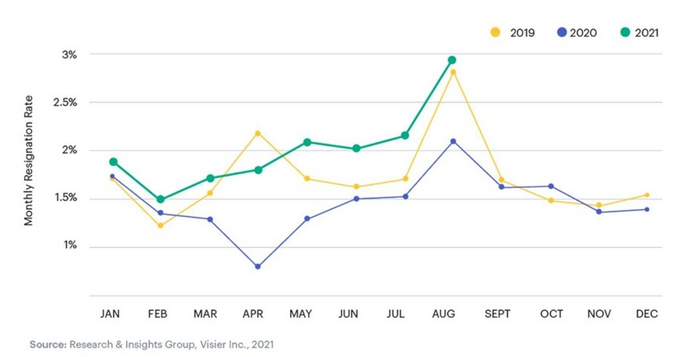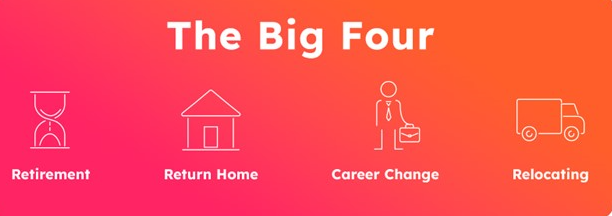By
Brian Mistretta
|
Date Published: August 31, 2022 - Last Updated August 25, 2022
|
Comments
An IndustryVoices article
Life is too short to be miserable at work. And the pandemic has prompted mass numbers of employees to look for better opportunities rather than settle for the status quo. This change in employee perspective is called The Great Resignation, and it has had a deep impact on contact centers. As evidence, agent attrition was 60% higher in 2021, with 58% more available jobs.
The term was coined by Professor Anthony Klotz, who credits the lockdown with showing people a new way of living and working. Many people came to prefer remote or hybrid work, and others decided to pursue a different career direction entirely. Others simply appreciated having more time with family and spending less time at work.

Regardless, the fact of the matter is there is no putting the genie back in the bottle. The labor market continues to churn with no signs of settling. In this environment, how can your contact center avoid the high cost of agent turnover? By becoming an employer of choice and competing for the best workers.
In order to achieve this, it’s important to examine the voice of the employee and consider the most common motives people have for leaving their jobs. Author Braden Kelley names the top four reasons people quit in his book, “Charting Change.”
1. Early retirement
2. Staying home
3. Better oportunities
4. Relocation

Health concerns are causing people to retire early
According to the U.S. Census Bureau, 3.6 million people retired during the pandemic versus the 1.5 million that were expected to retire. And data from the Federal Reserve Bank of Kansas City shows that an additional 2 million workers unexpectedly retired from the U.S. workforce in 2021—and stayed retired.
People are leaving the workforce and returning home
This change is especially true for families with children. With rising daycare costs and some schools shifting to at-home learning, families have simplified their lives by becoming single-income homes. They may also have realized they could survive on one income during the pandemic. According to the Bureau of Labor & Statistics, 1.62 million additional women remain out of the workforce even now.
Workers are exploring more options
Employees have had time to reflect on their careers. It's easy to feel trapped in a bad job when you've got bills to pay. But when people were forced out of jobs by the lockdowns and layoffs, it gave many a chance to consider what they actually want to do in life. The pandemic also caused employees to re-evaluate their loyalties to their employers based on whether their employers chose to keep people on or conduct mass layoffs. Loyalty is a two-way street.
Many people relocated during the pandemic
High taxes and housing costs have prompted workers to relocate to more affordable areas. The growth of the house-price-to-income ratio has exploded, and now it’s even higher than it was during the housing bubble in the early 2000s. In fact, 41% of employed Americans would take a pay cut in order to relocate to a more affordable region.
Why retention matters
As of October 2021, there are 11 million open jobs but only 7.4 million unemployed people in the U.S. to fill them. Companies can’t afford to lose highly skilled employees and attempt to hire and train inexperienced replacements from a labor force that has decreased in size. In fact, U.S. businesses are losing $1 trillion per year due to voluntary employee turnover.
It costs between $25,000 and $100,000 to replace a $50,000-per-year salaried employee. So, purely by the numbers, it’s cheaper to retain disengaged employees than to replace them. The cost of replacing underperforming workers is many times higher than the productivity loss they cause, so it’s important to retain and engage current staff.
What are some of the best ways to achieve your retention goals? Offer flexibility and remove friction.
Flexible work is here to stay
Months of working from home allowed employees the opportunity to enjoy more freedom and avoid the expense and hassle of commuting into the office. An employee survey showed an improvement in work-life balance during the pandemic resulting in 42% of respondents desiring more flexible work. And another shows that 83% of employees feel a hybrid work model is the best way to continue to enjoy that balance.
Luckily, contact center AI tools make it easier than ever to give agents flexibility and offer a hybrid work model. And flexibility could be one of the best ways to set yourself apart as an employer of choice.
Having the right cloud contact center technology can support a hybrid model without sacrificing human connection and meaningful relationships. For instance, it mimics familiar in-person work aspects, such as supervisor floor visits, to help assist agents through real-time screen monitoring, whispering, and real-time voice or text guidance. And integrated , such as Microsoft Teams, can act as a virtual solution for water-cooler talk.
Agents might not be able to physically turn to a neighbor for help, but many of today’s tools, such as knowledge management, can provide a similar level of support. While agents are handling calls, AI-powered knowledge tools provide the answer they need, so agents don’t have to crawl through pages of results or transfer the call.
Integrating other answer-sources into the agent desktop, such as customer context from integrated CRMs, and even real-time coaching, can improve the outcome of interactions and reassure agents that they’ll always have what they need at their fingertips.
And while some you might need to keep some agents on-premises, leaders can still offer better flexibility with mobile scheduling tools where agents can review their schedules, pick up, or trade shifts instantly. These tools will give agents more control over their work-life balance while showing them you value their time.
CHART 3
Remove friction from the agent experience
We all know what it feels like to be bogged down with redundant tasks and struggle with outdated technology that keeps us from doing our job in a meaningful way. Unfortunately, it can be even worse for many contact center agents.
The reason is that the focus often lies on improving the customer experience, but is that really even possible without improving the agent experience? Just like your customers, your employees want access to the necessary tools to effectively solve problems - so much so that 49% of workers say they’re likely to leave their current job if they’re unhappy or frustrated with workplace technology.
Integrating technology and interaction channels into a unified desktop prevents agents from wasting time and spares them the frustration of having to switch between channels. It can also help keep them engaged and happy at work.
Better employee experience reduces absenteeism and increases productivity. Ultimately, the customer benefits as well. Ensuring your agents are well-trained, equipped, and connected not only drives employee retention but also creates a better customer experience. An improved agent experience can decrease wait times, shorten call times, and increase first contact resolution.
Here are five additional tips to help you reduce employee churn:
1. Create a two-way feedback street
2. Support your managers
3. Improve agent onboarding
4. Tap into each agent’s sources of motivation
5. Set a retention intention throughout the agent life cycle
As contact center leaders, we all need to go further to stay fully staffed and attract top talent. Addressing some of the key reasons people have left the workforce will increase your chances of reaching your hiring goals and keeping your most talented employees from jumping ship.
Growing retention capabilities will put you on the right side of The Great Resignation and help you become an employer of choice. You can make your contact center the destination for agents who want to leave their current jobs for something better.
All these strategies will improve both the agent and customer experience. And we all want happy customers, right?
For more tips on how to reduce employee turnover and attract the most talented new employees to your contact center, download The Great Resignation White Paper.